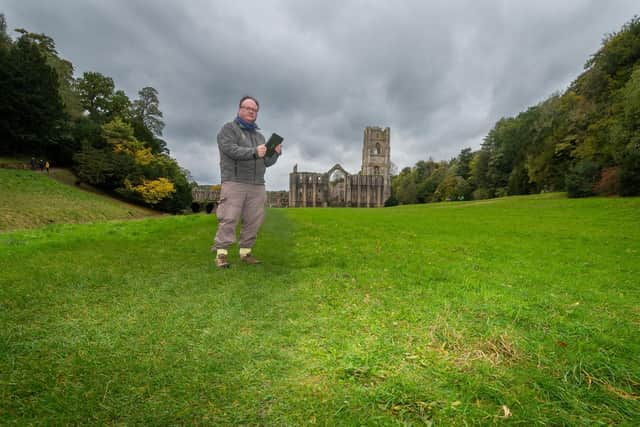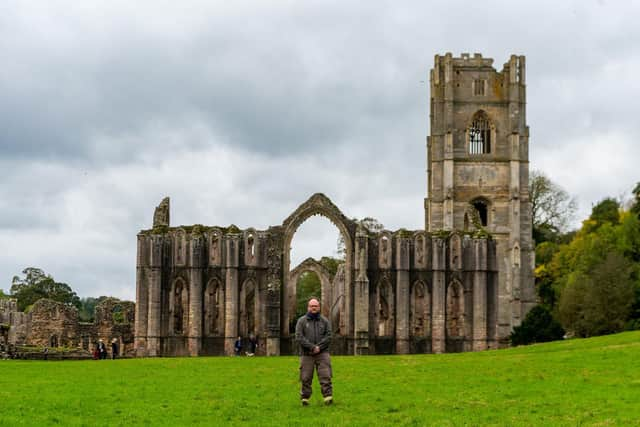Archaeologists' ground radar work reveals large-scale industrial leather tannery at Fountains Abbey in North Yorkshire
However, with ground-breaking technology revealing for the first time evidence of Britain’s largest monastic tannery at Fountains Abbey, it seems the Cistercian brothers were also industrial pioneers.
A team of archaeologists used ground penetrating radar at the UNESCO World Heritage Site to investigate an area close to the River Skell, and with the results showing the presence of two large buildings surrounded by pits, tanks they now believe it was home to a large-scale tannery.
Advertisement
Hide AdAdvertisement
Hide Ad

An archaeologist with the National Trust, Mark Newman, said: “A tannery of this size, spanning such a large area of the site, reveals an operation on an industrial scale, meeting the needs for leather and other processed animal skins for the community of hundreds of people in the growing monastic community.
“Given the noise, activity and stench that emanated from a tannery, we previously thought that it would have been sited further away from the monks and their worship. However, see now that the tannery was much closer and a far cry from the idea of a quiet, tranquil abbey community.
“Today, Fountains Abbey is an oasis of tranquillity, but in the 12th and 13th centuries in particular, it was as busy and industrialised a piece of landscape as you would have found anywhere in Britain.
“The bulk of the abbey’s needs for food processing and working raw materials would have taken place in these structures. ”
Advertisement
Hide AdAdvertisement
Hide Ad

Tanning was a vital part of the abbey’s economy where animal hides would be de-haired and cured to make leather for clothing, belts, bedding, book bindings and vellum for reproducing religious texts.
It was already known that tanneries were often run by lay brothers, recruited for their practical skills. However, the sheer scale of this discovery at Fountains Abbey, which remained in operation up to the Dissolution of the Monasteries in 1539, has surprised archaeologists.
Mr Newman added: “The Cistercians - and especially the community at Fountains - were pioneering farmers and land managers. They had to be, to support the enormous religious community that rapidly built up and the vast building projects they undertook, in praise of God.
“Their wealth was originally based on wool, but the community later diversified into cattle-raising too, while the need for processed animal skins was constant throughout the abbey’s life.
Advertisement
Hide AdAdvertisement
Hide Ad“In later years, when the herds were mainly managed by lay tenants as part of their rent, even the skins of any fallen stock had to be brought to the abbey for curing. That means that as much as possible was put to practical use."
The latest research at Fountains Abbey has been carried out by the National Trust with the help of the University of Bradford, Mala UK, Geoscan Research and Magnitude Surveys.
Hilary McGrady, the director general of the trust, said: “For much of the 20th century, many believed there was no further research work to do at Fountains Abbey. The team’s work shows the opposite - there is so much more still to discover.”
Comment Guidelines
National World encourages reader discussion on our stories. User feedback, insights and back-and-forth exchanges add a rich layer of context to reporting. Please review our Community Guidelines before commenting.
